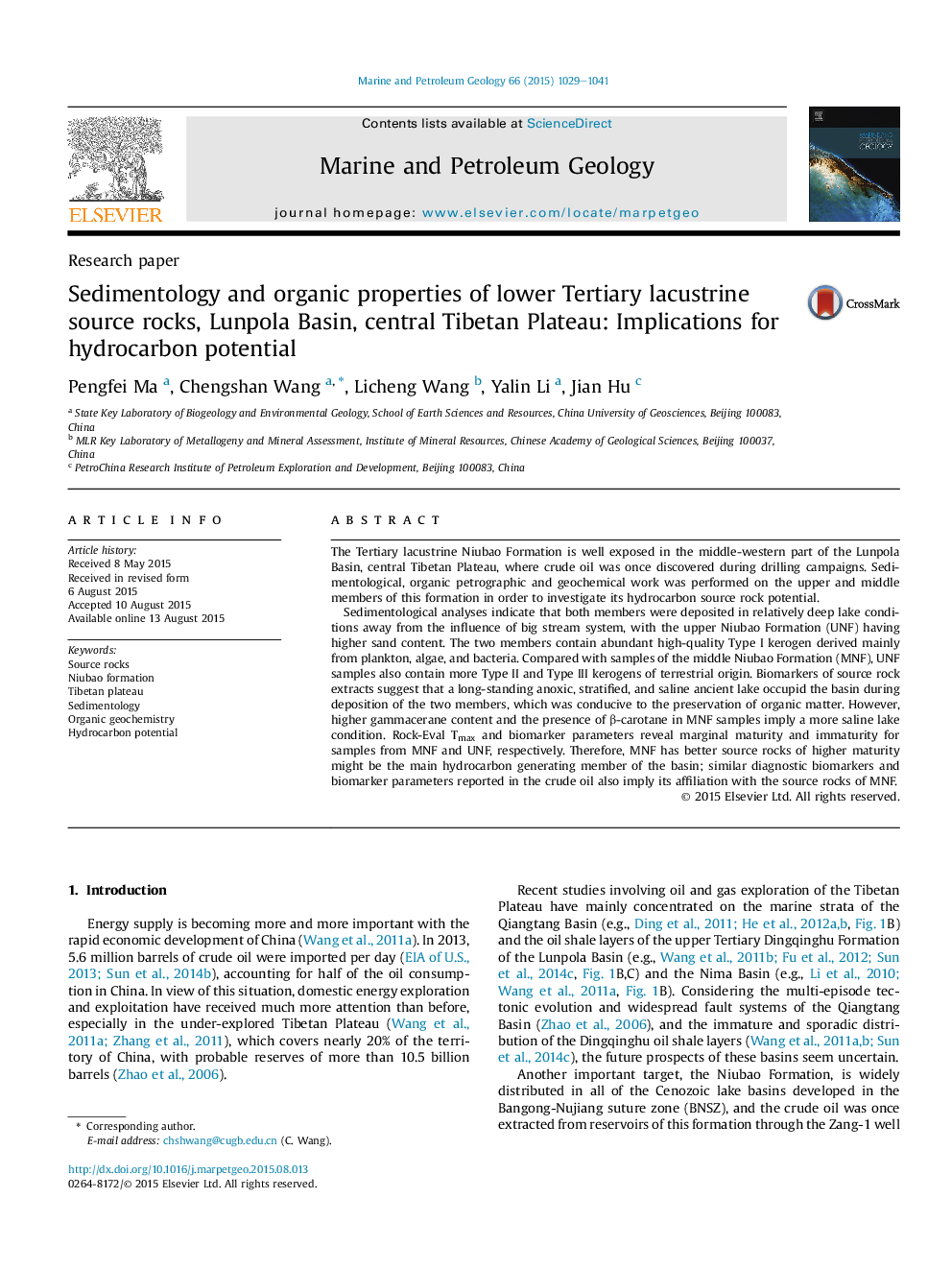| کد مقاله | کد نشریه | سال انتشار | مقاله انگلیسی | نسخه تمام متن |
|---|---|---|---|---|
| 4695506 | 1351610 | 2015 | 13 صفحه PDF | دانلود رایگان |
• The two members of the Niubao Formation were deposited in the long-standing anoxic, stratified, and saline lake conditions.
• Source rocks of the two members contain dominant Type I kerogen derived mainly from plankton, algae, and bacteria.
• Samples of the Upper Niubao Formation are immature.
• Samples of the Middle Niubao Formation are marginally mature.
• Crude oil of the Zang-1 well was likely expelled from the Middle Niubao Formation.
The Tertiary lacustrine Niubao Formation is well exposed in the middle-western part of the Lunpola Basin, central Tibetan Plateau, where crude oil was once discovered during drilling campaigns. Sedimentological, organic petrographic and geochemical work was performed on the upper and middle members of this formation in order to investigate its hydrocarbon source rock potential.Sedimentological analyses indicate that both members were deposited in relatively deep lake conditions away from the influence of big stream system, with the upper Niubao Formation (UNF) having higher sand content. The two members contain abundant high-quality Type I kerogen derived mainly from plankton, algae, and bacteria. Compared with samples of the middle Niubao Formation (MNF), UNF samples also contain more Type II and Type III kerogens of terrestrial origin. Biomarkers of source rock extracts suggest that a long-standing anoxic, stratified, and saline ancient lake occupid the basin during deposition of the two members, which was conducive to the preservation of organic matter. However, higher gammacerane content and the presence of β-carotane in MNF samples imply a more saline lake condition. Rock-Eval Tmax and biomarker parameters reveal marginal maturity and immaturity for samples from MNF and UNF, respectively. Therefore, MNF has better source rocks of higher maturity might be the main hydrocarbon generating member of the basin; similar diagnostic biomarkers and biomarker parameters reported in the crude oil also imply its affiliation with the source rocks of MNF.
Journal: Marine and Petroleum Geology - Volume 66, Part 4, September 2015, Pages 1029–1041
